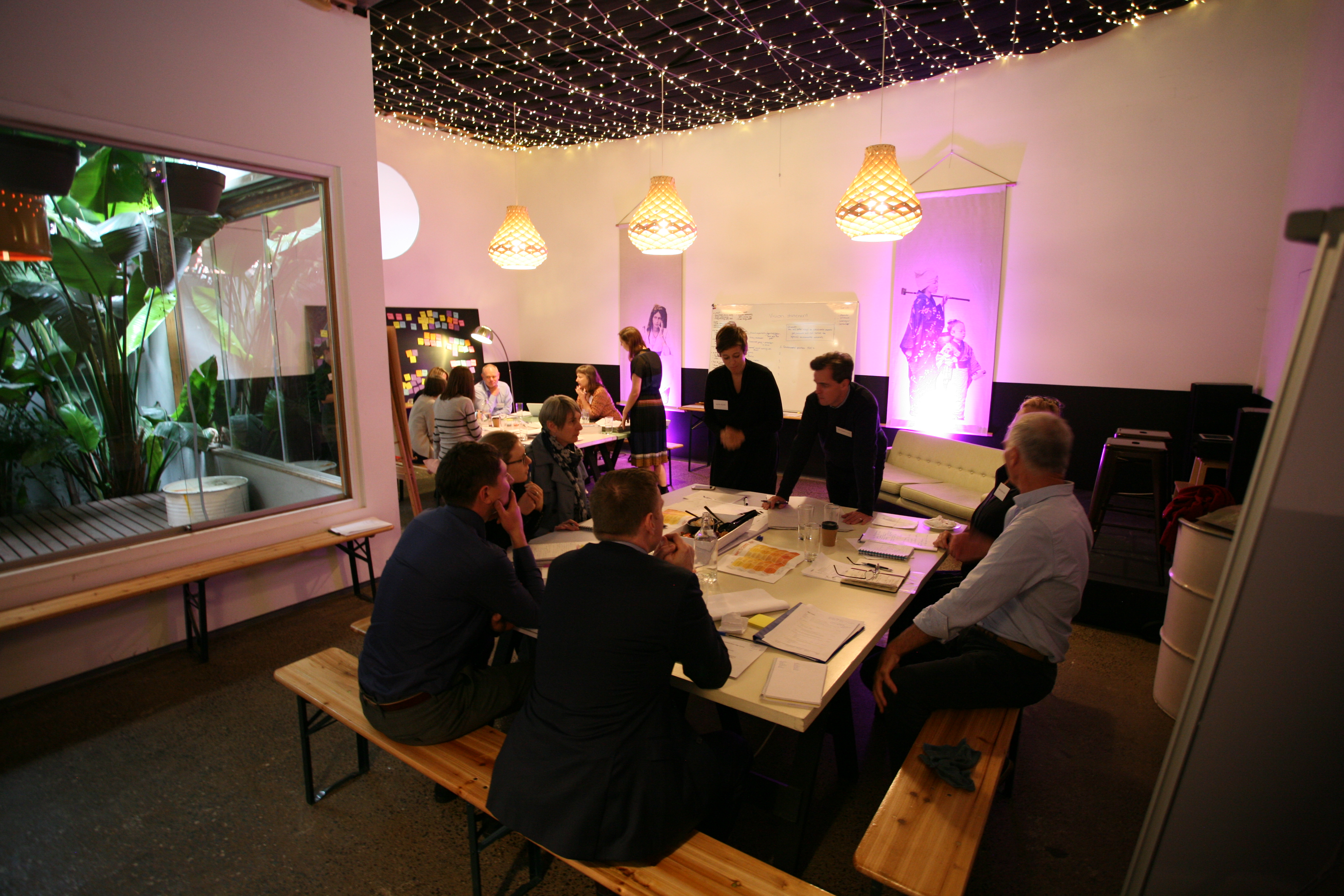
Client
In November 2016, the Department of the Environment and Energy (the Department) established a partnerships team to actively explore opportunities for private, non-government and philanthropic sectors to work together. The partnerships team sought to investigate new and different ways to collaboratively achieve environmental outcomes.
The Department engaged Ellis Jones to assist in the design and facilitation of a co-design process exploring opportunities and barriers to cross sector participation in addressing environmental issues, engagement in collaborative programs, partnership types and financing arrangements. As a design, social impact and behaviour change consultancy, Ellis Jones brings many years of experience in the design and facilitation of successful co-design projects.
Across a series of incubators sessions with groups from government, corporate, civil society, indigenous, academic and business sectors, we thoroughly explored relevant environmental intersections and revealed deep insights for innovative cross-sector collaborations.
Challenge
The major issues facing Australia’s unique environment are generally very complex, multi-faceted and cross into many sectors and areas of expertise. For this reason, no one organisation, business or government department can easily effect positive change. The Department identified the need for a collaborative, mutually beneficial partnership framework to be created. The primary outcome sought from the co-design process was a partnerships ‘signal’, communicating Departmental support for partnering for environmental outcomes. A co-design project of this size and complexity requires facilitation expertise to navigate preconceived ideas and guide the participants in solution driven design thinking. With the need to create predominately self-sustaining, multi-stakeholder outcomes (including business incentives and social impact) the concept of creating shared value was an ideal basis for the partnership models.
Response
Unable to resist the promise of free muffins and a chance to have input into a wide reaching project, over the course of four months, more than 100 participants from 70 organisations in Darwin, Sydney, Canberra and Melbourne attended the hack-a-thon-esque incubator sessions. With responsive and fluid development of the process and co-design methodologies, EJ worked carefully to draw out deep insights within each session. The incubator sessions explored the drivers, challenges, opportunities and roles of each sector, related to the environment. Screeds of butcher paper, post it notes, scribbled thoughts and digital surveys were channeled into a series of post session summaries and reviews. These summaries we’re used by a cross sector group of representative experts who formed the Core Co-Design Group (CCDG). Throughout the process the CCDG offered initial guidance on the project direction, monitored the first round of findings, and lastly synthesised the findings into prototype “signals”. Broadly, the CCDG and incubator sessions set out to establish:
- A shared vision for future environmental and conservation partnership activities.
- A common understanding of environmental priority areas.
- A common understanding of drivers and barriers to participation in conservation financing or other environmental partnership activities.
- Areas of alignment between current and planned environmental work across different sectors.
- Greater understanding of boundaries/parameters to organisations entering an environmental partnership.
- Potential ideas for proof of concept or pilot projects.
Outcome
The outcomes sought through this project were:
- A signal that is a catalyst for partnerships, providing clarity on the opportunities available. Of indefinite form, the project sought to deliver confidence in the content of the signal.
- A model for partnering that includes variations by stakeholder/sector, defining the type of partnerships, the scale, range and potential examples.
- Advocacy for the benefits of engagement with stakeholders throughout the project, extending the Department’s network and potentially fostering partnerships with engaged stakeholders.
- The project was designed, in line with co-design best practice, to move from exploring broad context, to defining specific solutions and testing prototypes, over the course of four months.
With a solid base of evidence now accrued, the challenge moves to design, engagement and management. The signal, in its final form, will operate more as a system than a single intervention or product. This is a marked difference from what was hypothesised at the outset of this co-design process, and thus requires additional consideration. The next phases require a rigorous approach, combining best practice methods, user testing, and cross-sector leadership to make a complex, multi-part concept work in reality.

